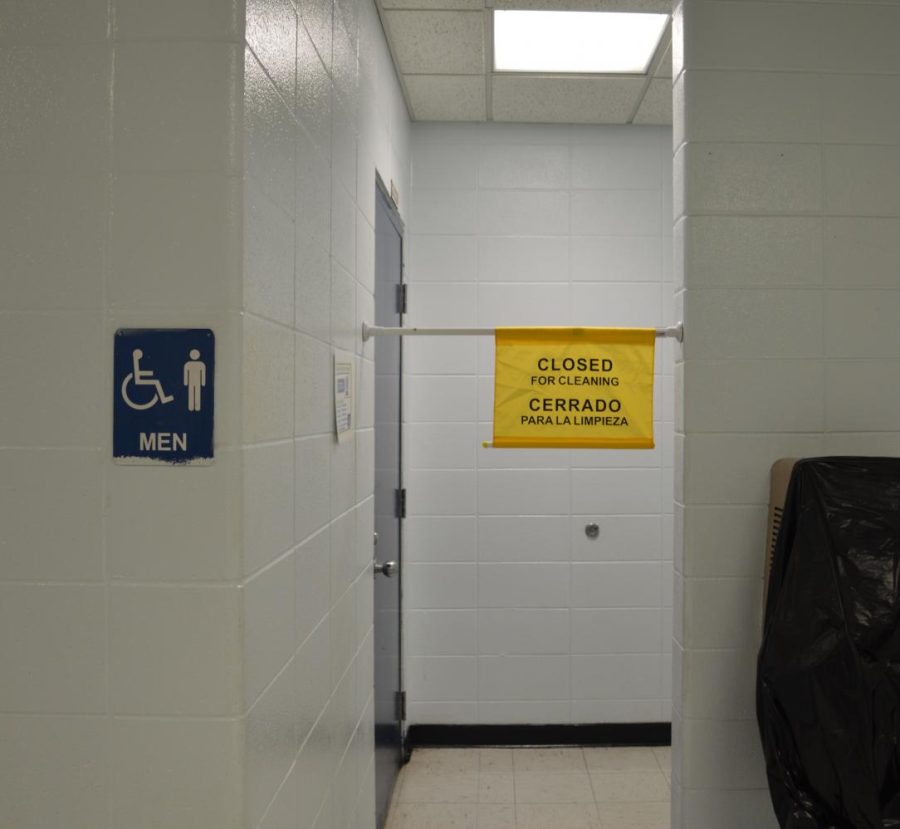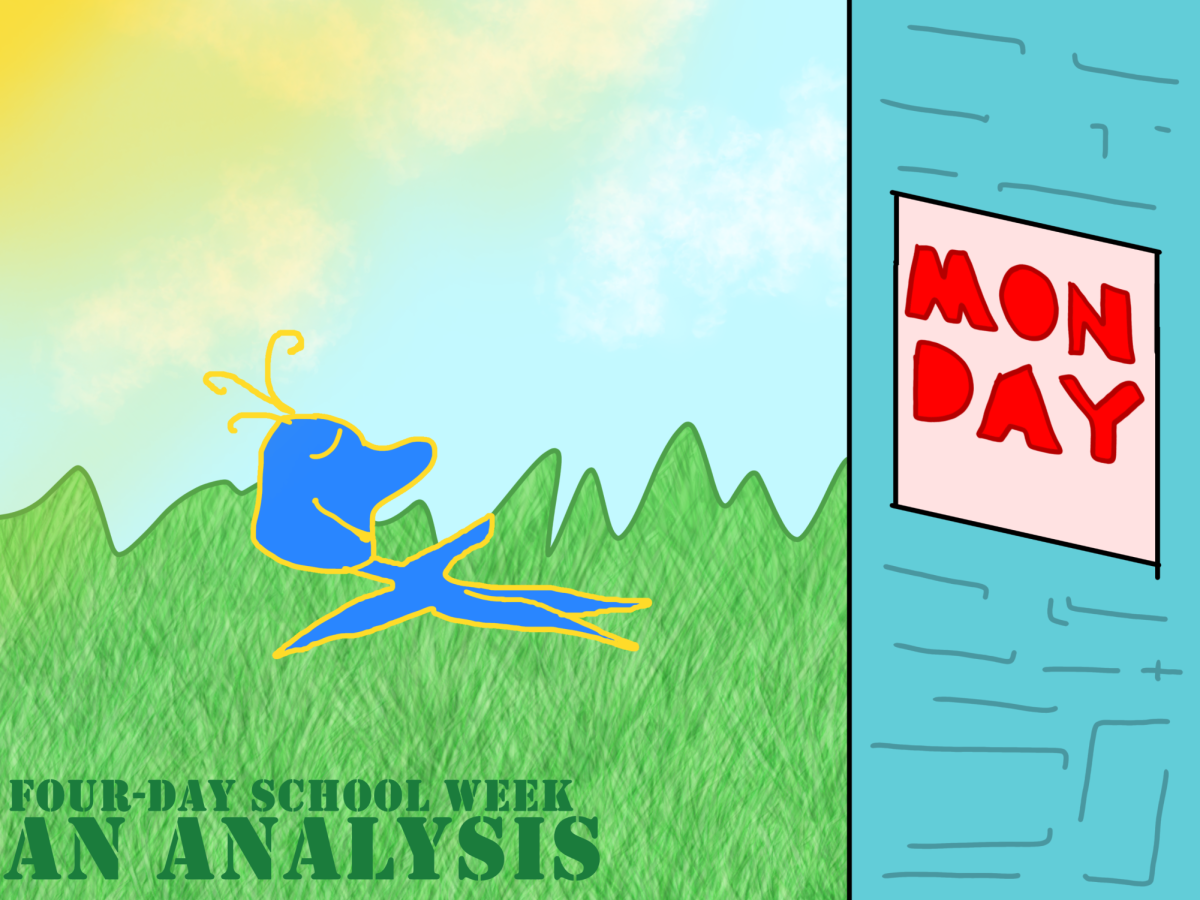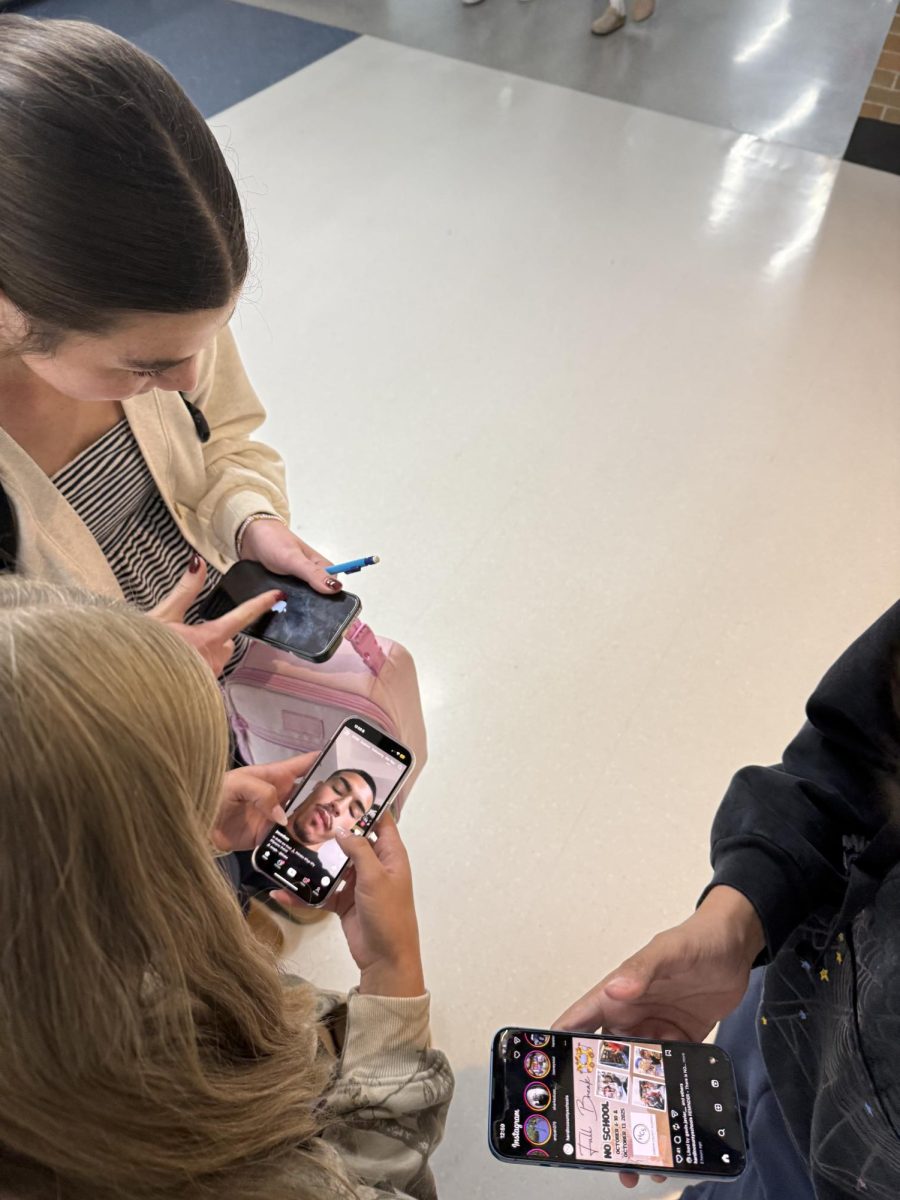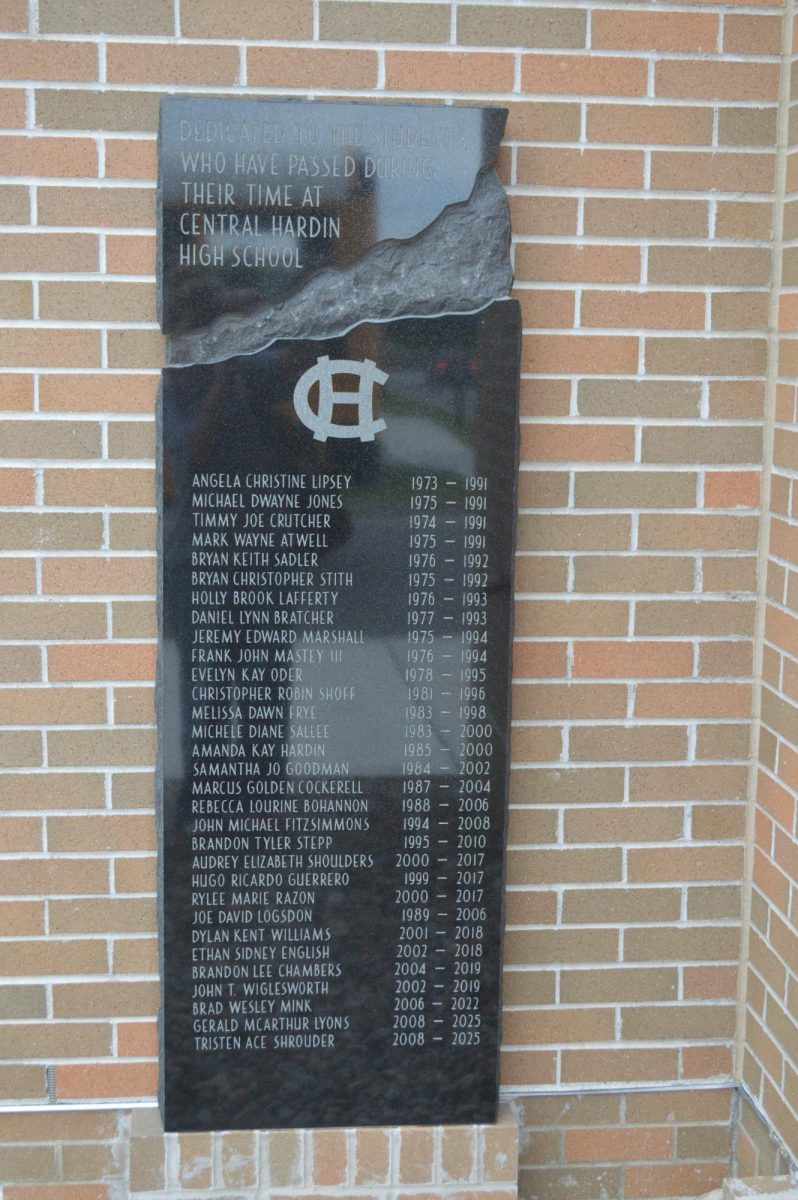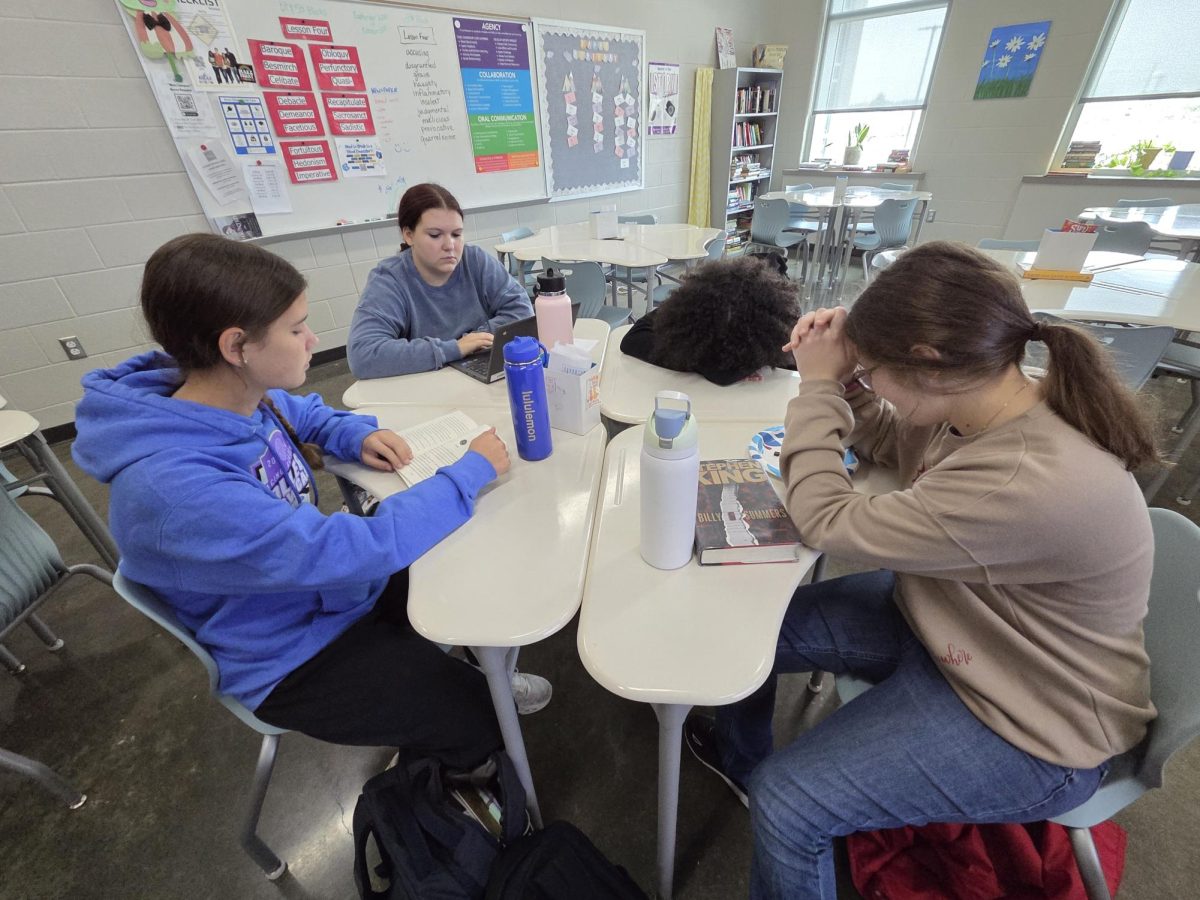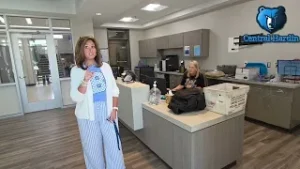No More Restroom Ravaging
An Administrative Take On Vandalism and Childish Behavior in School Bathrooms
The boys bathroom temporarily closed due to student vandalism.
October 21, 2022
Over the past few years of reintroducing educational rhythms post-COVID, Central Hardin has experienced an increase in vandalism and destructive behavior in its restrooms. Some students believe that this tomfoolery is humorous or entertaining, while others are embarrassed and upset that their peers would act in such a childish manner. For the adults in the building, the responsibility to clean up and take disciplinary action falls upon them. They are outraged and disappointed in the Bruin community after such a long battle with this issue. Something needs to be done, and it is up to mature students to start inspiring change.
So what is the appeal to committing vandalism, not only strictly in school bathrooms, but on any public property? According to the U.S. Department of Justice’s Psychological Analysis of Vandalism, “…vandalism may be motivated by malicious greed, by the wish to draw attention to a particular condition, by a political ideology, by the desire for revenge on a particular person, by frustration, or by misguided playfulness.” There are an array of factors that could potentially push an individual to become a vandal. Furthermore, destructive behavior by one individual tends to stimulate similar behavior in others, especially when they are aggressively oriented or easily admissible.
For the Bruin community, trends revolving around social media platforms like TikTok or Snapchat have been directly correlated with destructive behavior within both boys’ and girls’ restrooms. Similar to how these videos can shift in popularity overnight, patterns of this horseplay are rather sporadic.
“It seems like it will go on for a while where everyone is being respectful and doing what they are supposed to do, and then all of sudden, we will go a week where a lot of things get destroyed. So it’s really off and on,” vice principal Matt Baucum recounts. “It’s almost like if one person heard someone else did it, then they will want to do it too just to one up them.”
In his experience with dealing with the individuals responsible for this behavior, it tends to most often be a freshman or sophomore student as the instigator. However, our upperclassmen are not free from the blame. Any and all students who use the restroom throughout the day are suspect, no matter gender or age.
“As far as destructiveness goes, boys seem to do it more. However, girls are just as bad and there is a lot of graffiti in the girls bathroom,” Baucum explains. “Some of the containers in the stalls seem to get emptied out, pulled out of their spots, and made a mess in the girls restroom as well.”
Over time, the areas where students go to relieve themselves become a reeking, disgusting dump: toilet paper scattered on tile; soap dispensers leaking and cracked; inappropriate language and images etched into stall walls. Unfortunately, this is where our janitorial staff comes into play.
For janitor Travis Reed, who is in and out of the student restrooms on a daily basis, this bad behavior is truly an inconvenience. Imagine if you were the one scrubbing urinals, painting stalls, and plunging toilets. Yuck!
“I get that they need an outlet to vent frustration, but that’s not the right way to do it,” Reed expounds. “It takes them five minutes to destroy; takes us fifteen, twenty, thirty minutes to put it back together.”
Even after over a year of complaints, vandalism and outrageous behavior continues to occur within the privacy of our school restrooms. Baucum, along with other teachers and administrators, is putting his best efforts into trying to catch the culprits. They regularly check the area and watch cameras to try and track those going in and out of particular restrooms, but nonetheless, it can be extremely difficult to narrow down who committed the crime. If students are willing to disclose any information pertaining to vandalism or inappropriate behavior that occurs in the bathrooms, it would be greatly appreciated. Baucum’s email is always open, and anonymity can be assured.
When a piece of school property is destroyed, custodians, and in some cases, plumbers, are contacted to repair and replace the item. Although this may sound minor, bathroom resources are expensive and come out of Central’s allocated funds. Even the plastic soap dispensers on the wall can cost as much as $40 or $50. If caught, a student will be charged and held responsible for the damage. Actions come with consequences, and as high school-aged students, this should be common sense.
“So, even though it might be a funny video, or they [students] might think they’re impressing their friends, they don’t understand that it’s really causing other issues: the damage, the monetary value of what is damaged, and then the workers who have to go and clean up their mess,” Baucum articulated.
Bathroom vandalism and bad behavior is a real problem at Central Hardin. Scratching things into linoleum walls is not okay. Dumping inappropriate substances into toilets or urinals is not okay. Removing sinks, soap dispensers, and hand dryers from the wall is not okay. These actions are not okay. This conduct portrays our school in an irresponsible and puerile fashion. This can not continue, and it is up to the student body to take initiative.
“You guys are here for four years, might want to make this as pleasant as possible,” Reed concluded.
Please take pride in your school and its property. Respect it and treat it like your own home, for in many ways, it is.

